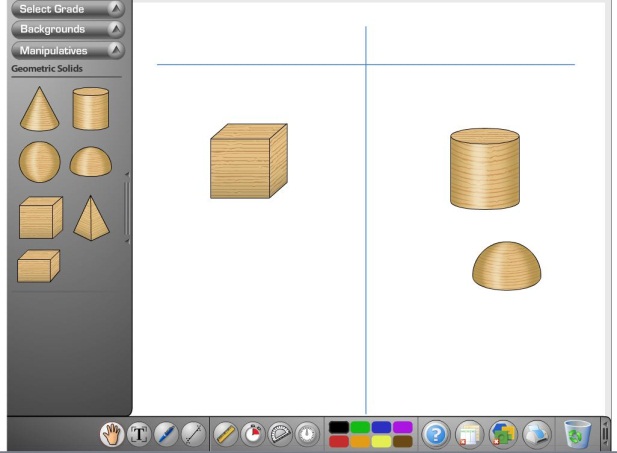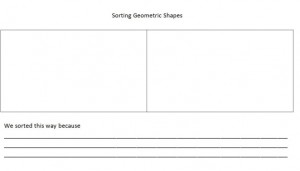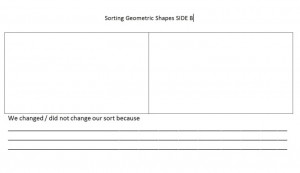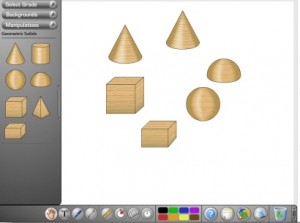How would you customize any of the mobile technologies discussed in this lesson to facilitate embodied learning or mobile learning for math or science? Explain your choices.
I am fascinated by the prospects of using Apps in the classroom to teach science and math. Apps like other simulations, applets and sites provide learners with experiences that they would otherwise have to imagine. Apps can provide multisensory experiences about how the natural world operates by mirroring it.
My school has acquired three Ipads in the last little while and I have seen positive results of embodied learning when we have used Apps to teach in small groups or with individual students. My Learning Assistant teacher, the parents of the students involved, and I have noticed and discussed that the level of student involvement and motivation is very high. It is much different and intense compared to use of applets /sites on the computer or doing interactive activities on the Smart board.
Embodied learning theorists /scientists believe that all our experiences are grounded in our body (Winn, 2003). Hence cognition gets enhanced when learning involves multimodality, kinesthetic, and collaboration. So when we create a learning environment with activities that involve the above and interact with that environment, cognition happens [Winn, 2003]. I can see this happen with the use of Apps in the classroom. Using Apps involves touching and maneuvering. Apps are also multimodal as they involve visuals, sound, touch, and spatial interactions. For example, if we use the App shared by Valerie [Solids Elementary HD] in the math class where students can examine shapes by touching them, moving them, and opening them in their nets [which could not happen with a solid, real manipulative] their understanding of geometric shapes will be enhanced.
Winn also says that we have different perceptions and views depend on our different experiences of the environment (2003). There are often misconceptions that can be formed due to many reasons. Also students may get distracted by the other affordances of the Apps. For example I do mention that the wow factor in the app I recommended [Solar Walk] can be very distracting.
Since students will perceive the app contents in their own individual way, collaboration and discussions will allow students to check their mental models and modify them if needed. I found discussions helpful even when using the very structured and directive Apps like Mitosis. As my daughter and I went through it – discussing and rehashing what we had just seen and done- it helped making sense of the next stage.
This clearly suggestion the need to embed the use of Apps in the constructivist learning processes like T-GEM (Khan, 2007) and the LfU (Edelson, 2001). We know that no technology is effective till embedded in proper pedagogy. By creating a learning environment where the students can interact with content in multisensory and multimodal fashion to create mental models and then collaborate with others to assess, evaluate, and modify their mental models will complete the embodied learning experience. The role of the teacher becomes that of a guide or an expert who can help students through their ZPD’s by providing some guiding information. I so believe that Apps are pervasive technology whose use can shift the class towards a more student centred and self-directed learning (Zhang et.al, 2011).
Resources:
Edelson, D.C. (2001). Learning-for-use: A framework for the design of technology-supported inquiry activities. Journal of Research in Science Teaching,38(3), 355-385. http://onlinelibrary.wiley.com/doi/10.1002/1098-2736%28200103%2938:3%3C355::AID-TEA1010%3E3.0.CO;2-M/abstract
Khan, S. (2007). Model-based inquiries in chemistry. Science Education, 91(6), 877-905.
Winn, W. (2003). Learning in artificial environments: Embodiment, embeddedness, and dynamic adaptation. Technology, Instruction, Cognition and Learning, 1(1), 87-114. Full-text document retrieved on January 17, 2004, from: http://www.hitl.washington.edu/people/tfurness/courses/inde543/READINGS-03/WINN/winnpaper2.pdf
Zhang, B., Looi, C-K, Seow, P., Chia, G., Wong, L-H, Chen, W, So, H-J, Soloway, E. & Norris, C. (2010). Deconstructing and reconstructing: Transforming primary science learning via a mobilized curriculum. Computers & Education, 55,





